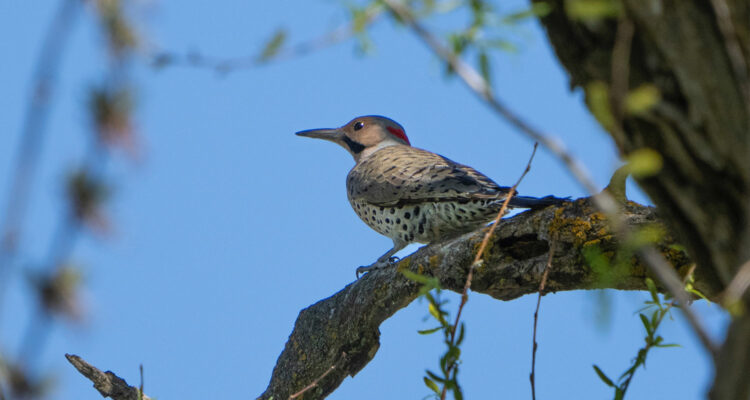Bird City, Milwaukee County is a monthly column celebrating the 11 cities, towns, and villages that have achieved Bird City status within Milwaukee County. Citizens of these locations have made bird conservation a priority, protecting land, writing ordinances, and educating the public on issues concerning our avian neighbors. You can learn more about the Bird City Network by visiting its website. This month: the City of Greenfield.
Not all Bird Cities are created equal. While there are 11 Bird Cities throughout Milwaukee County, four truly reach for the skies when implementing bird-friendly policies and education. These cities work hard, executing at least 20 Bird City initiatives and restricting cat colonies. (This is your friendly reminder to check out last month’s article, which goes over cat policies you and your cities can make to ensure bird safety.) Bird City bestows a special recognition for these places, granting them “High Flyer” status. Today we head west of the airport to cover our first Milwaukee County High Flyer, the City of Greenfield.
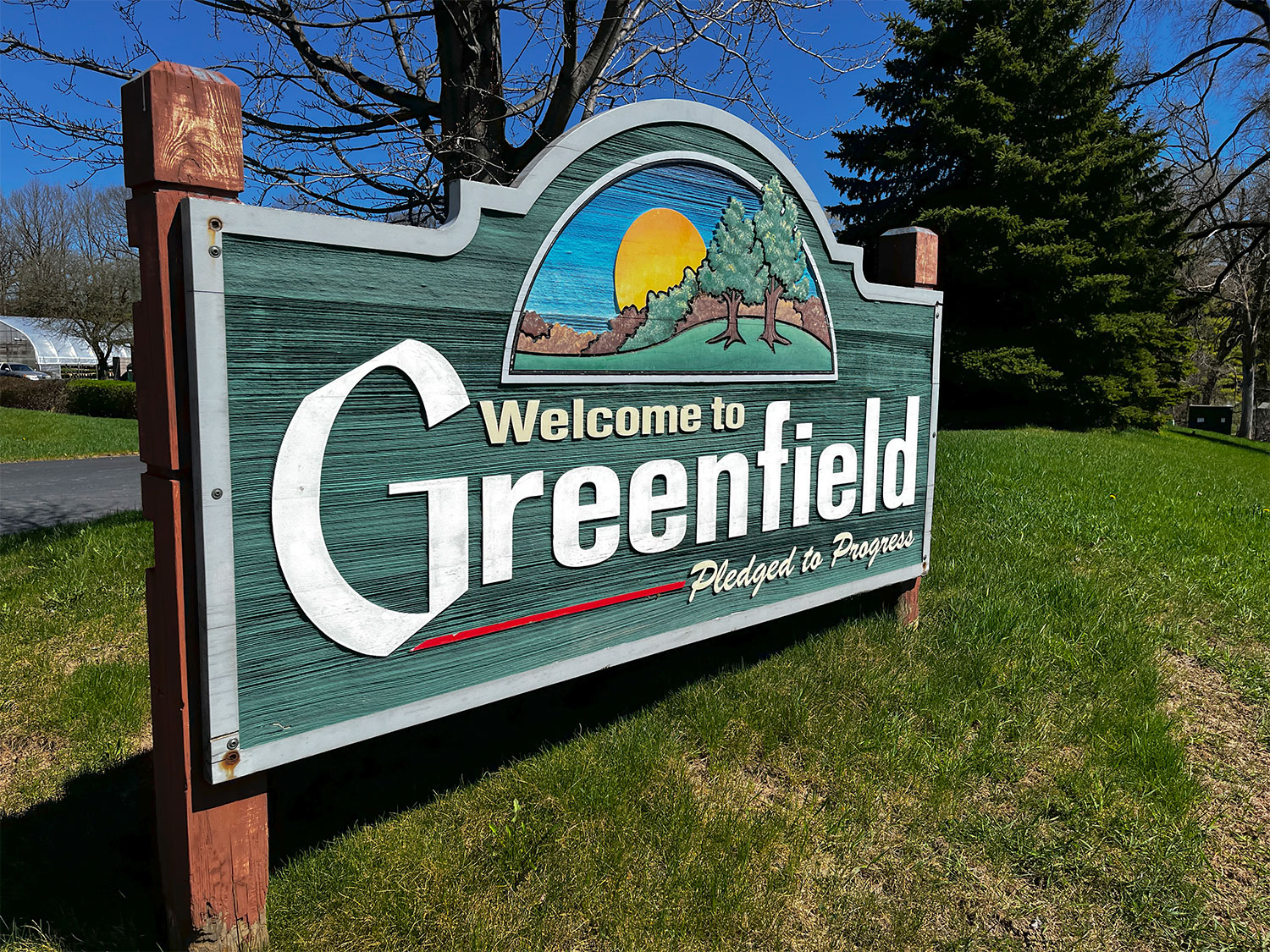
The truth is, Greenfield is more than just a Bird City. It’s both a Bee City and a Monarch City, and while a lot of the places this column covers are also Tree Cities, Greenfield outdoes them all. In 2023 Greenfield became the only Milwaukee County city to earn the designation TREE CITY OF THE WORLD, a title it shares with 48 cities across the United States and 200 across the planet. Pretty cool stuff if you ask me. I’ll introduce you to Greenfield’s City Forester, Dennis Fermenich, later in the article, but for now let’s celebrate the cool places that make the City of Greenfield a great place for birds!
The City of Greenfield has three popular birding spots—all listed on the Bird City government webpage. Kulwicki Park, Root River Parkway #5, and Konkel Park are all quaint, humble little spots, but they’re worth making time for. Kulwicki Park is named after famed NASCAR driver and Greenfield native Alan Kulwicki. I grew up in a race-watching household, so I have a soft spot for this honor. He’s legitimately one of the most interesting people in the world of motorsports (and nicknamed The Underbird, so he totally fits within the confines of this article), and the City of Greenfield is doing a fantastic job up-keeping the park named in his honor. Milwaukee’s waterways have long been a sore spot for the county, but over the past decade coalition building has led to an increased number of improvements for humans and wildlife throughout the county’s waterbodies. At Kulwicki’s Wildcat Creek, an important part of the Root River has been restored. The effort was a heavy lift, removing invasive species and sediment while stabilizing the banks and forming pollinator gardens throughout the park. This work buffers the insect populations that many birds rely on and helps reduce flooding—a win-win for people and wildlife. Take a walk behind the park’s baseball diamond to look for home run balls, northern flickers (above), and more. You might just spot a duck box too.
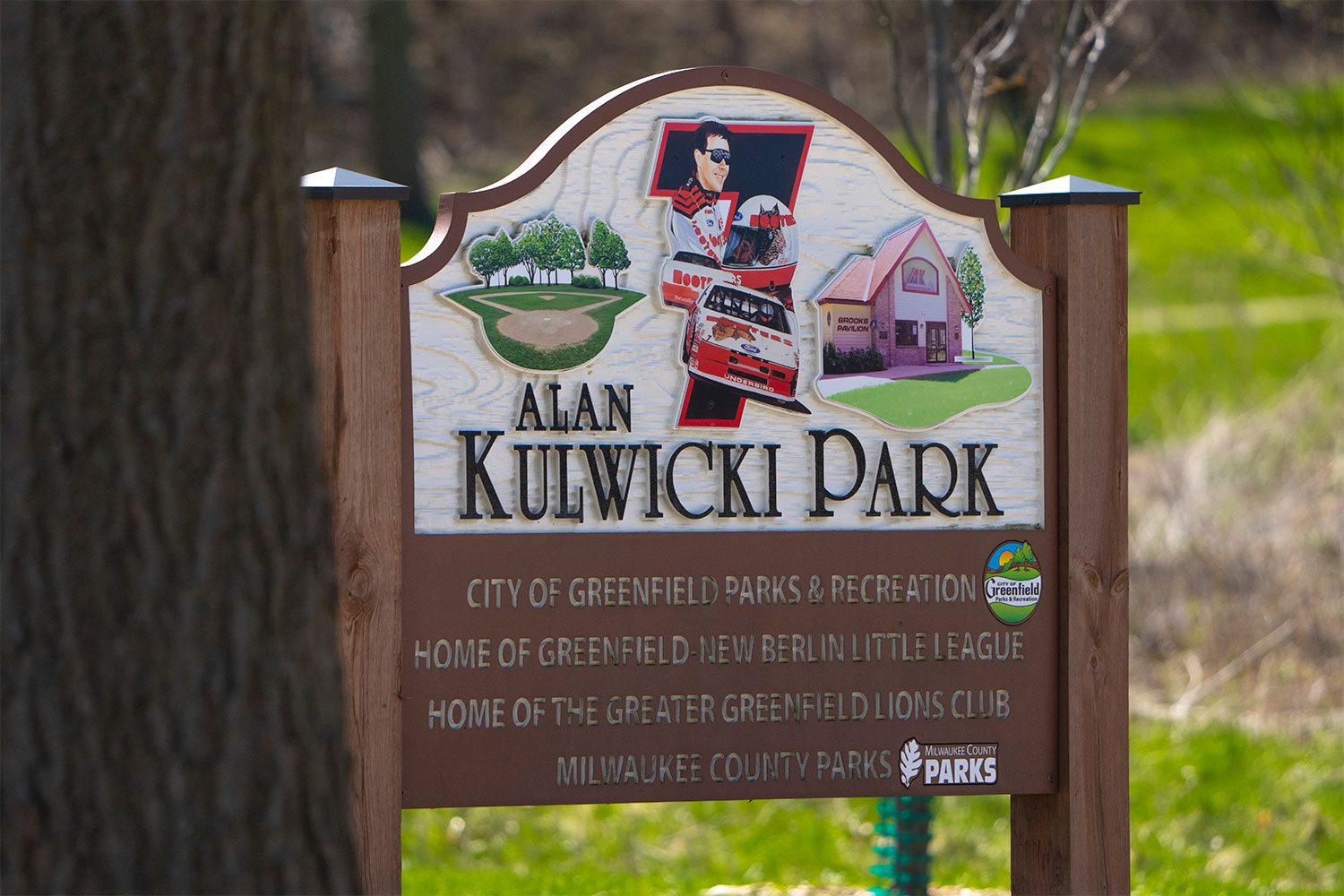
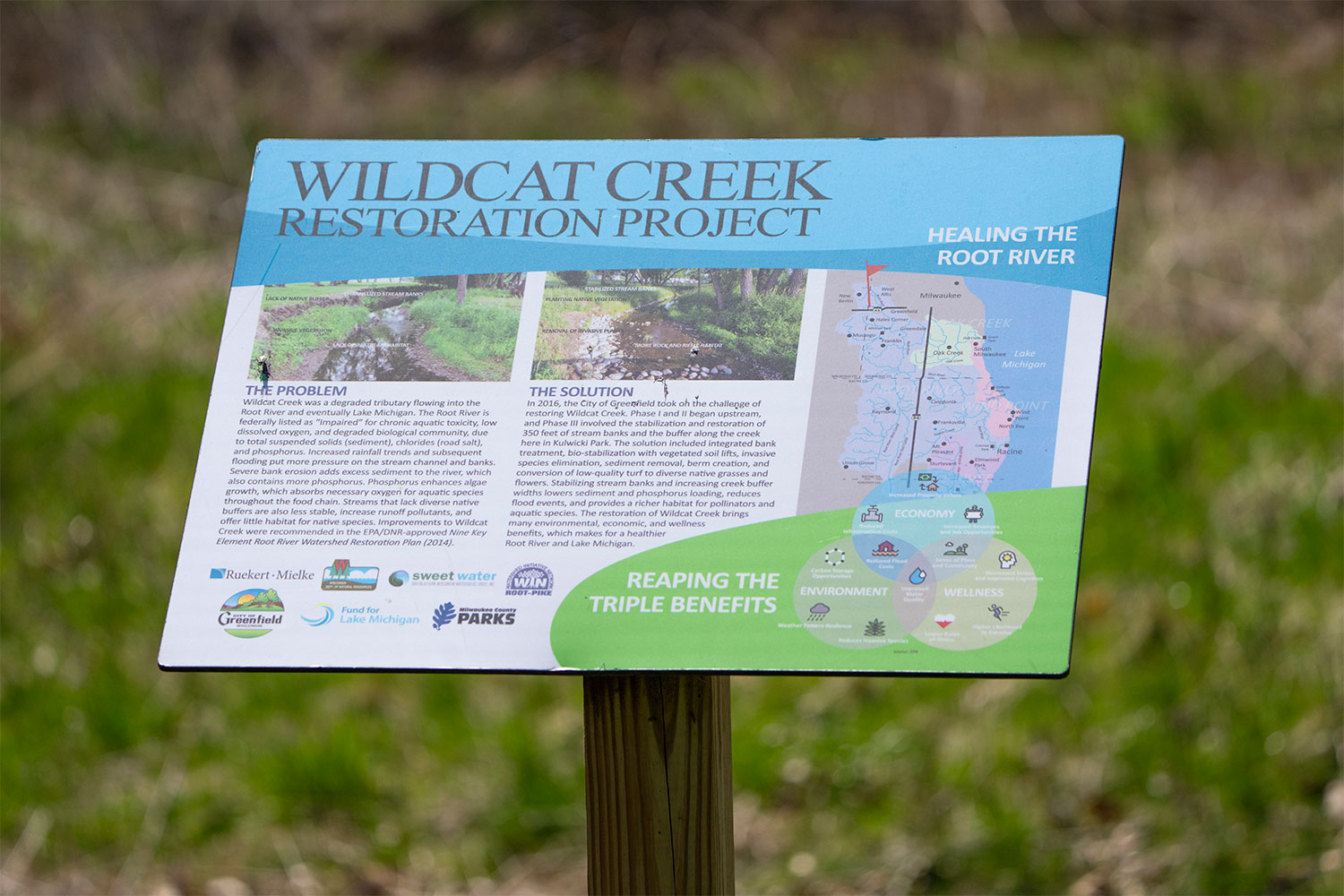
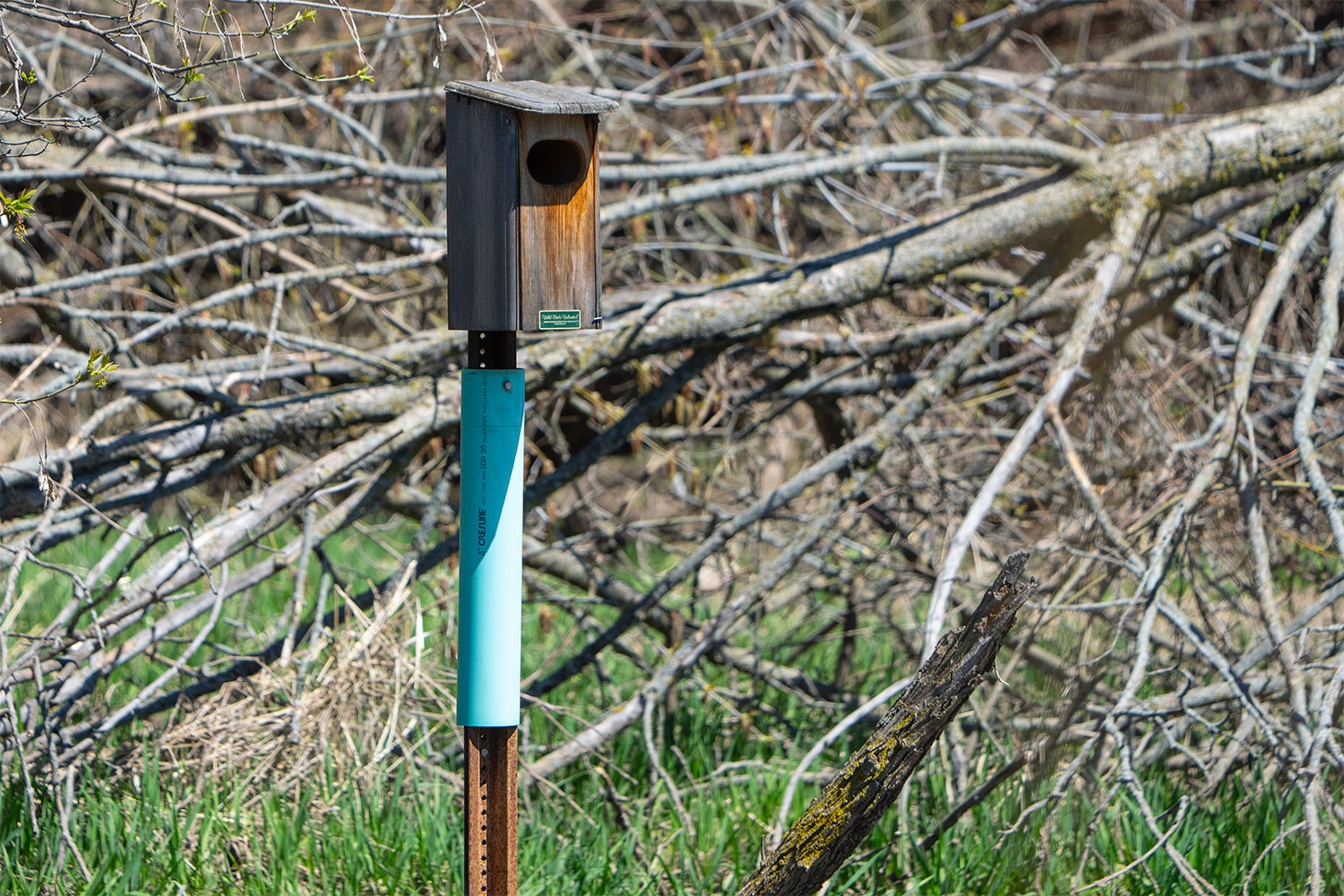
Root River Parkway #5 along the Oak Leaf Trail is filled with friendly song. Northern cardinals, black-capped chickadees, American robins, and song sparrows filled the air during my walk. The path opens up to the Root River which is flush with activity. This spot is an official eBird hotspot, which is a telltale sign that birds of all sort are fairly active. I saw my first belted kingfisher of the year here. The bird has a distinctive chatter and is cautious around people. It’s a flashy bird, a favorite of many birders including my wife. The spot has a low and distant drone of city traffic but is otherwise an extremely peaceful spot. Well worth checking out as we head into migration.
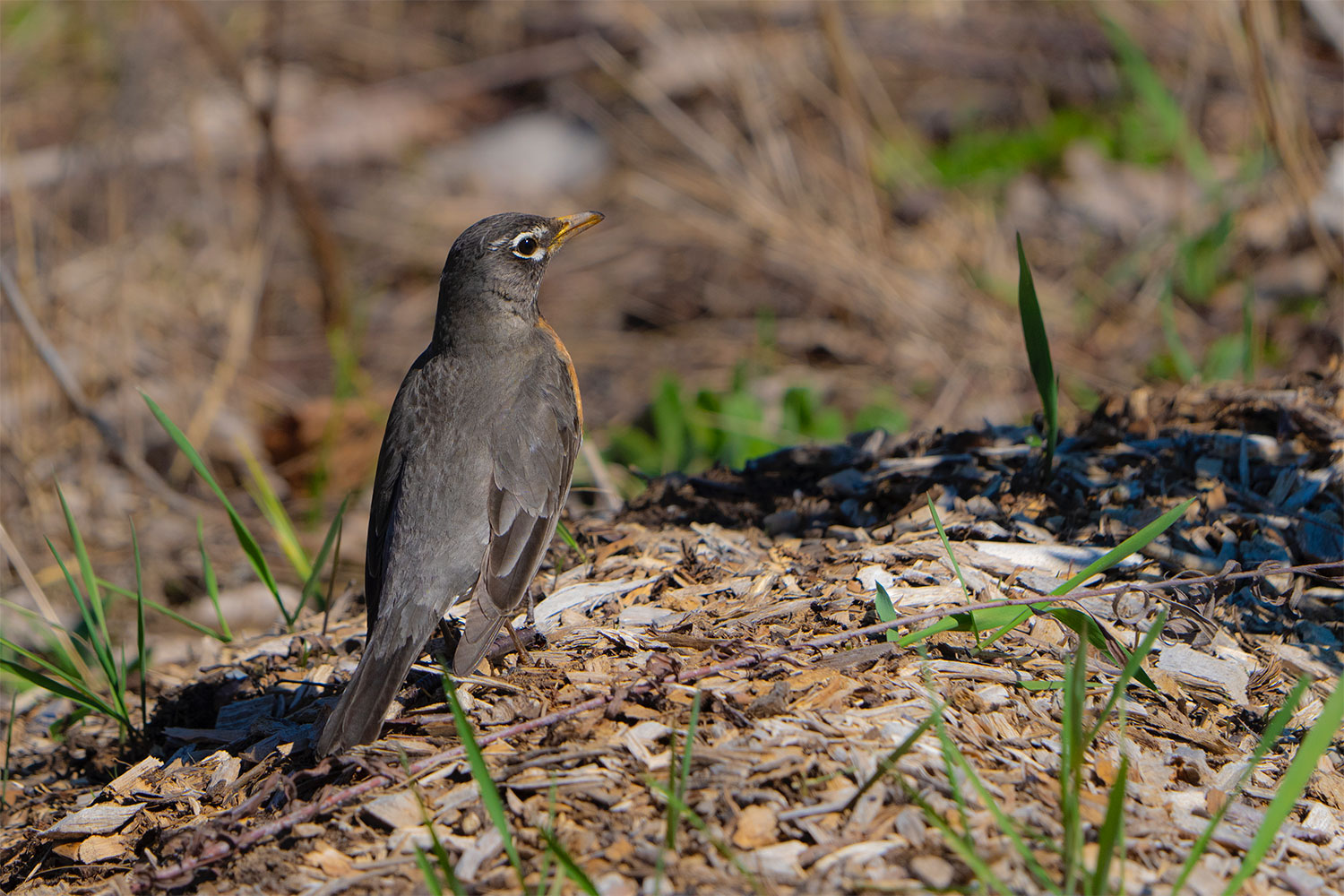
American Robin
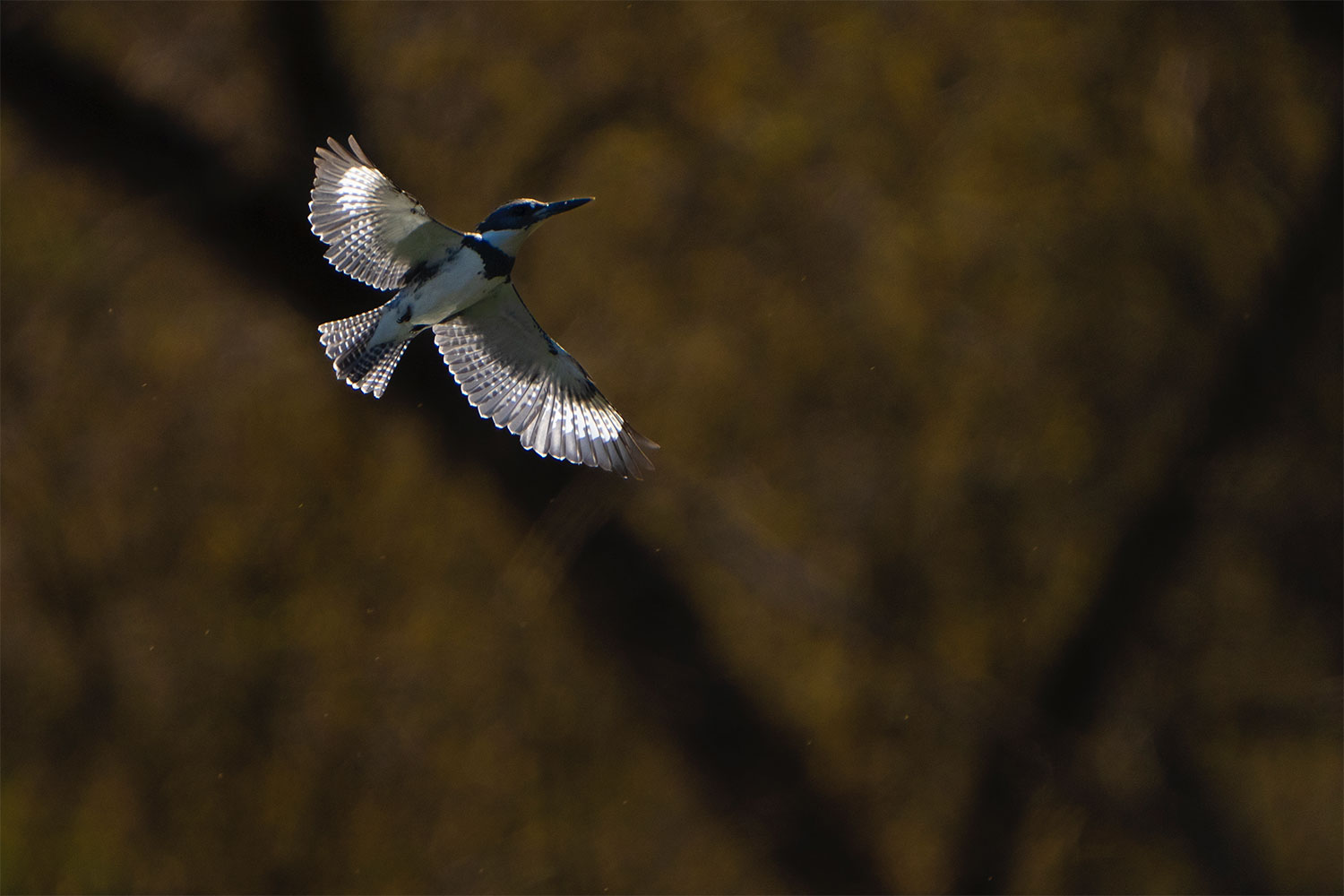
Belted Kingfisher
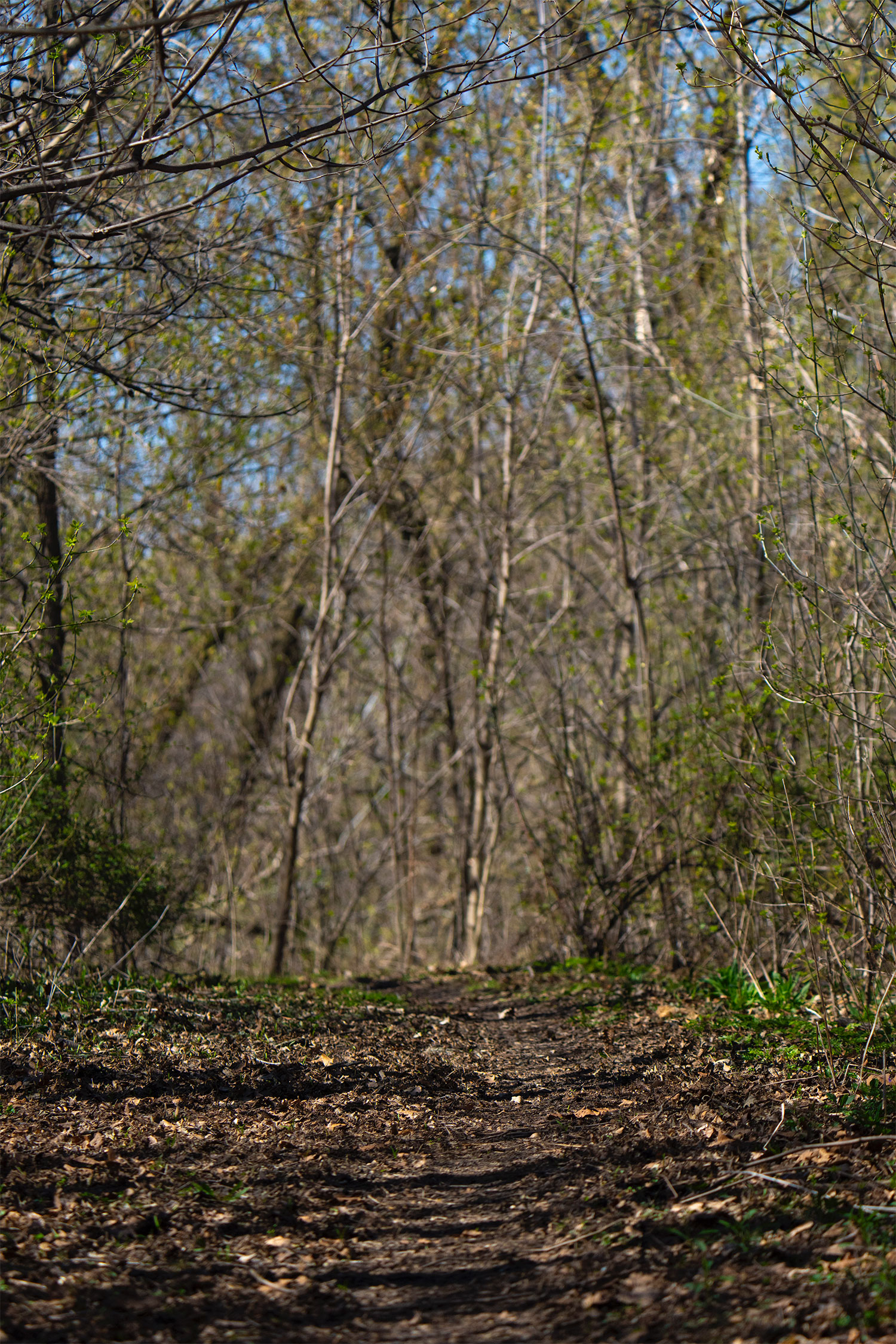
The final spot I want to highlight, Konkel Park, is a favorite of mine, but this was my first time seeking it out as a birding spot. Konkel Park hosts one of my favorite south-side farmers markets every Sunday, May through October. It’s a great “oh crap, it’s gameday and we need food” spot and a good way to ensure you have fresh veggies for your meals heading into the week.
Looking at it through a birder’s lens I found a gem in the making. The park has a trail system that goes through a rebuilt wetland. The warm winter kept water levels low this year, but I still saw my fair share of common Milwaukee wetland birds including the first batch of this year’s swallow migrants, another Belted Kingfisher, and my fair share of Red-winged Blackbirds. I expect this spot to heat up in the coming years and wouldn’t be surprised if all three species of Milwaukee heron are seen every morning in the summer. The space is currently pretty bare, but it’s not what people should expect in the future—which we’ll get to in a moment. In the meantime, the current space makes for a nice chill Killdeer spot. Looks like I’ll have to add a nice bird walk to my farmers market runs this year.
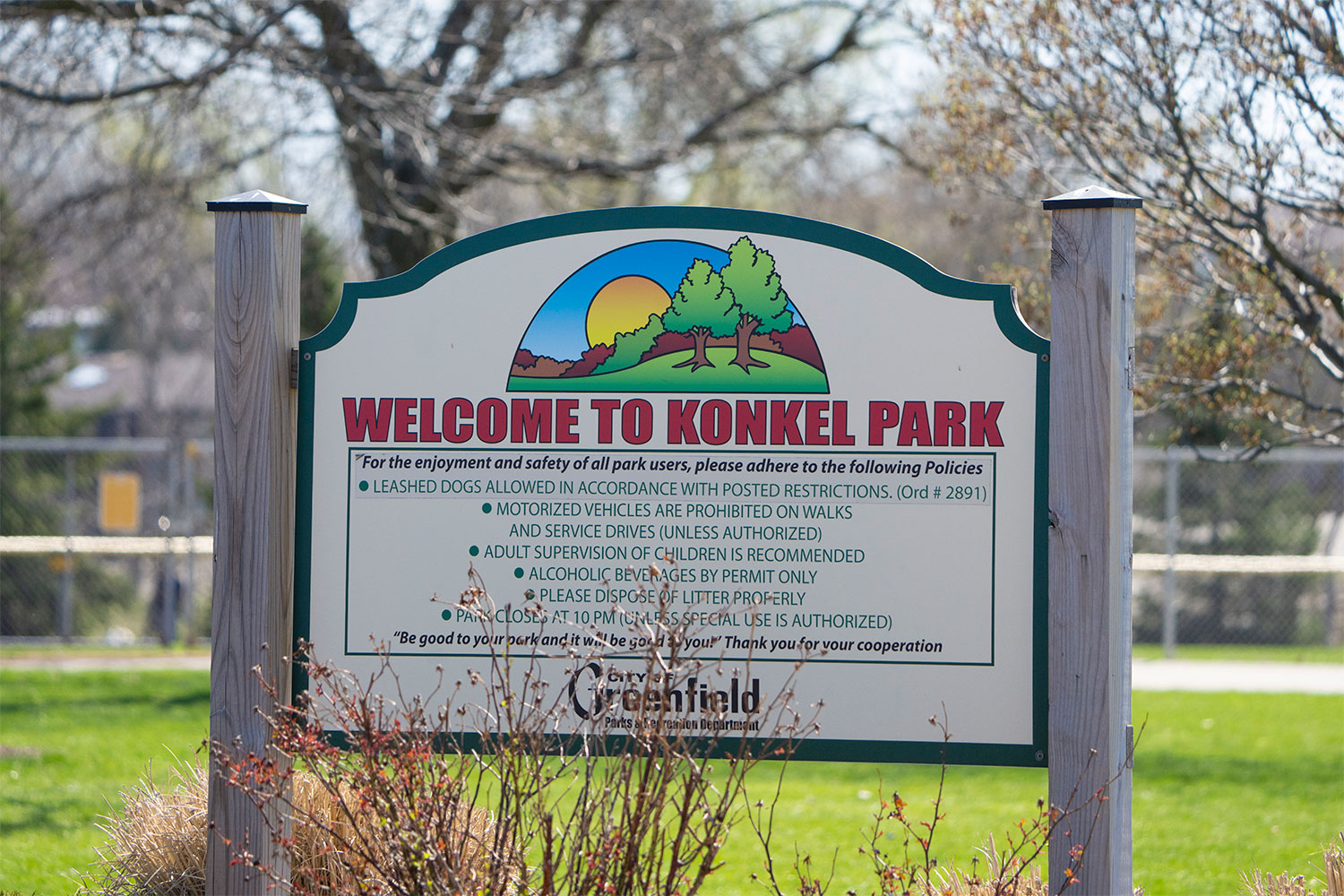

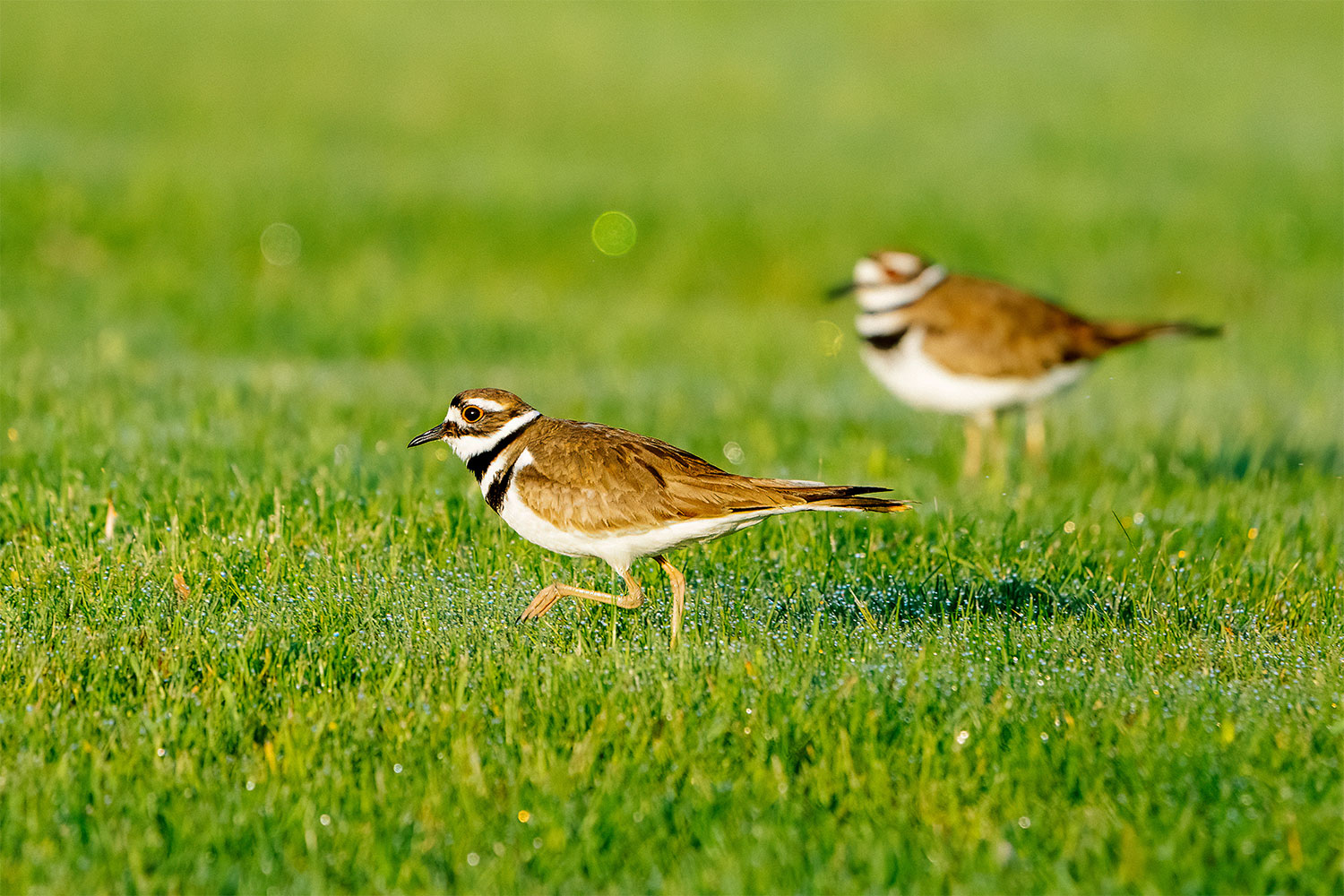
Kildeer
All in all, Greenfield is low-key one of my favorite areas in the county. There are rad local record shops (random Volta Records shout-out), a plethora of food options (random El Beso shout-out), tabletop gaming (random Warpstorm shout-out), and more. To keep things from getting too unruly, I want to highlight two spots every bird enthusiast should check out, as well as a restaurant.
Last month I talked about Sprecher Brewery in Glendale. Another staple of Glendale is also a staple of Greenfield: Kopp’s Frozen Custard. This location lacks the iconic cows but its menu is the same. Gut-busting burgers and a new custard every day. Not a good pre-bird hike meal, but a good “post-hike OMG We Saw A-Rare Bird Let’s Celebrate” stop. And while you’re going for the burger, skip the fries and go straight for their onion rings. Probably my favorite in town.
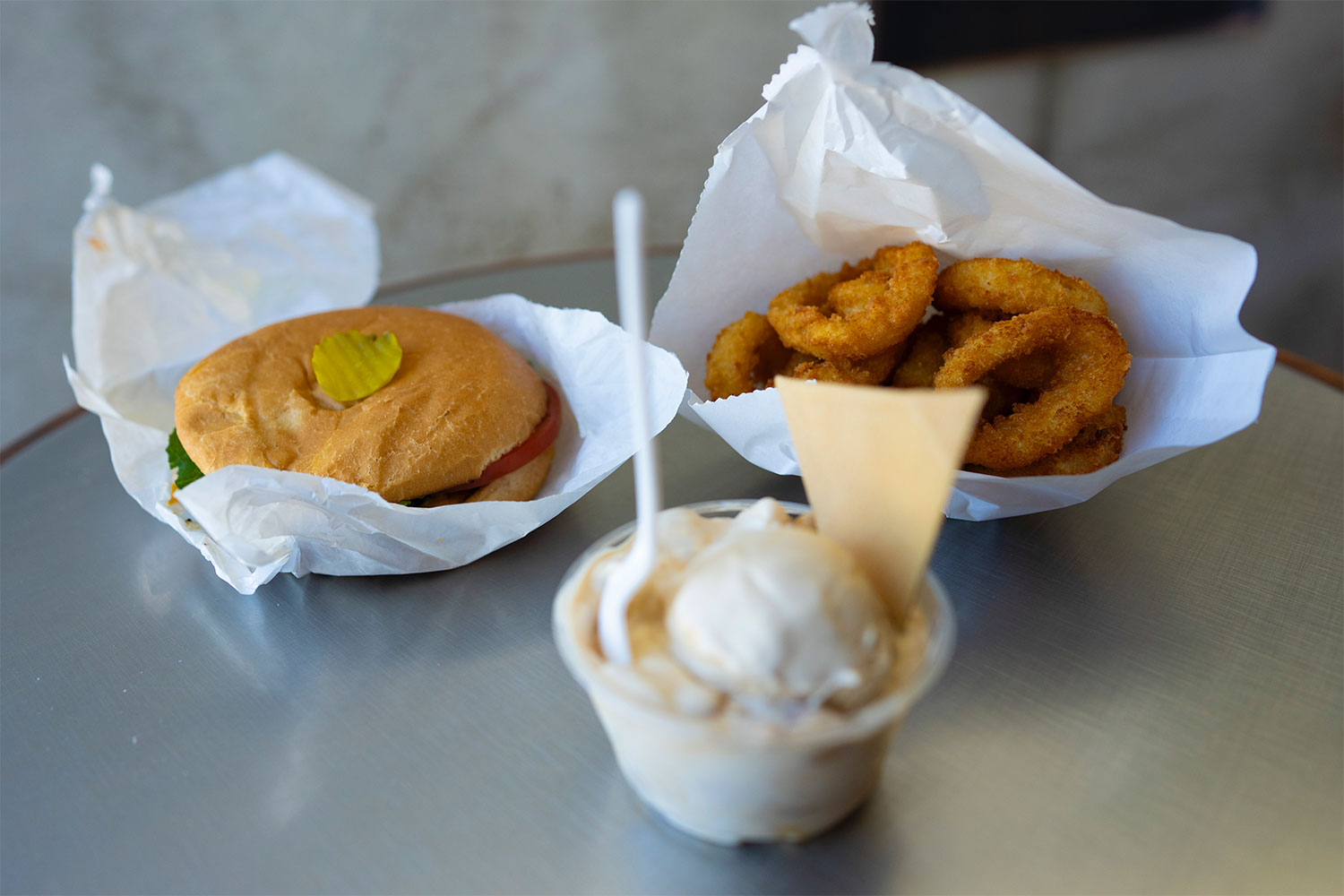
After expanding one’s stomach it’s time to think about expanding birds’ stomachs, so Wild Birds Unlimited on 108th Street is worth a go. And if you’re interested in dabbling in bird photography, up the street from Kopp’s is Art’s Camera Plus. Both of these businesses are worth your time and your money. They’re local shops with expertise that outweighs box stores. Wild Birds has specialized seed and bird boxes, and the staff can give you tips for the best feeder/box setup. If you want to dabble in wildlife photography but don’t want to commit, Art’s gives you the ability to rent gear at an affordable price. They also host a wide range of photo classes, including classes on wildlife photography. Online shopping dominates the photography world but it’s nice to see places like Art’s stake a living here, and this location of Wild Birds Unlimited does a ton of work to benefit birds in the Greenfield community. They even sponsor Greenfield’s Bird City efforts!
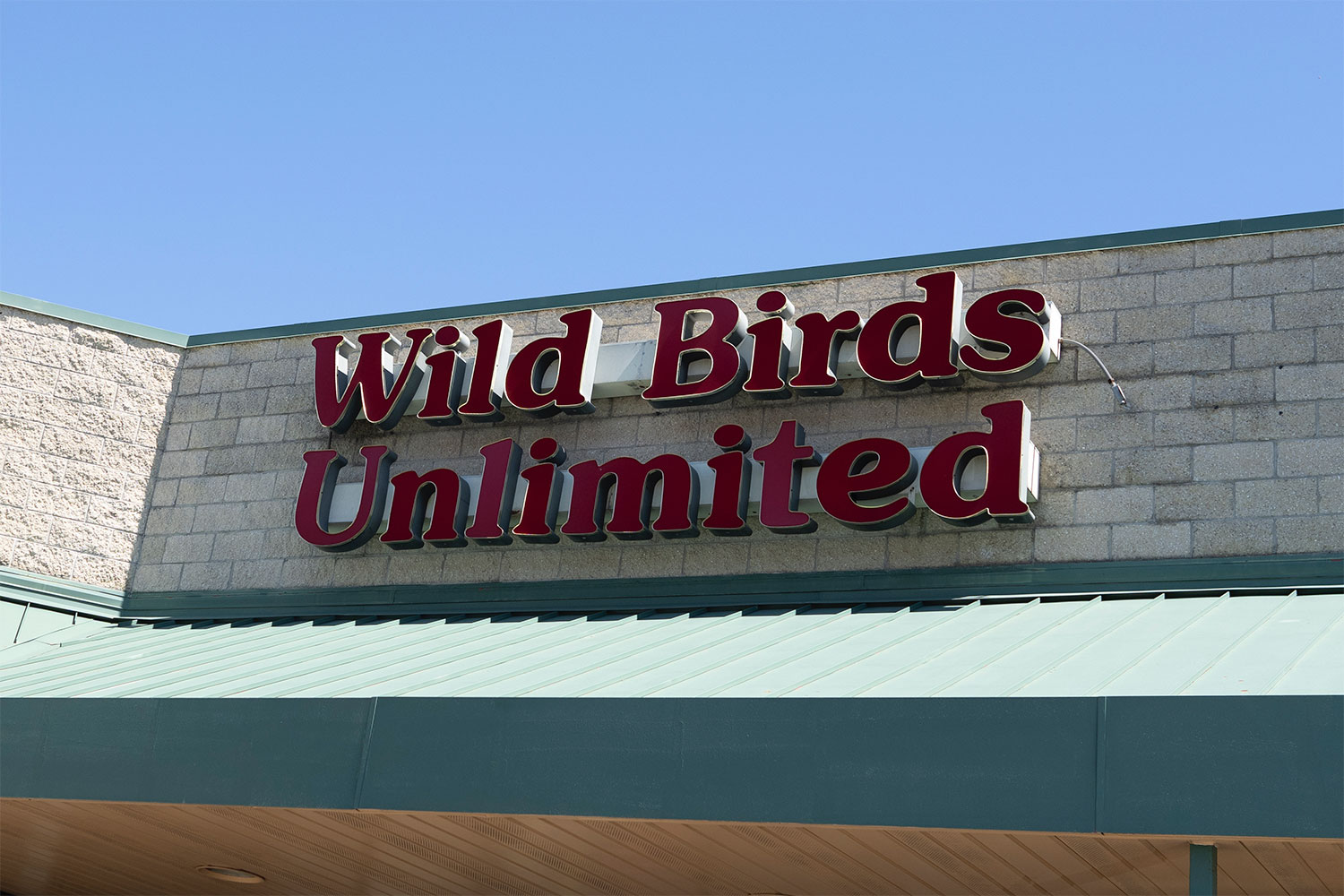

Greenfield’s a pretty happenin’ place for nature initiatives, and that’s all by design. Roughly 30 years ago the city hired Dennis Fermenich to act as city forester as part of an effort to transform the city into what it is today.
Q&A with Dennis Fermenich, City Forester at the City of Greenfield
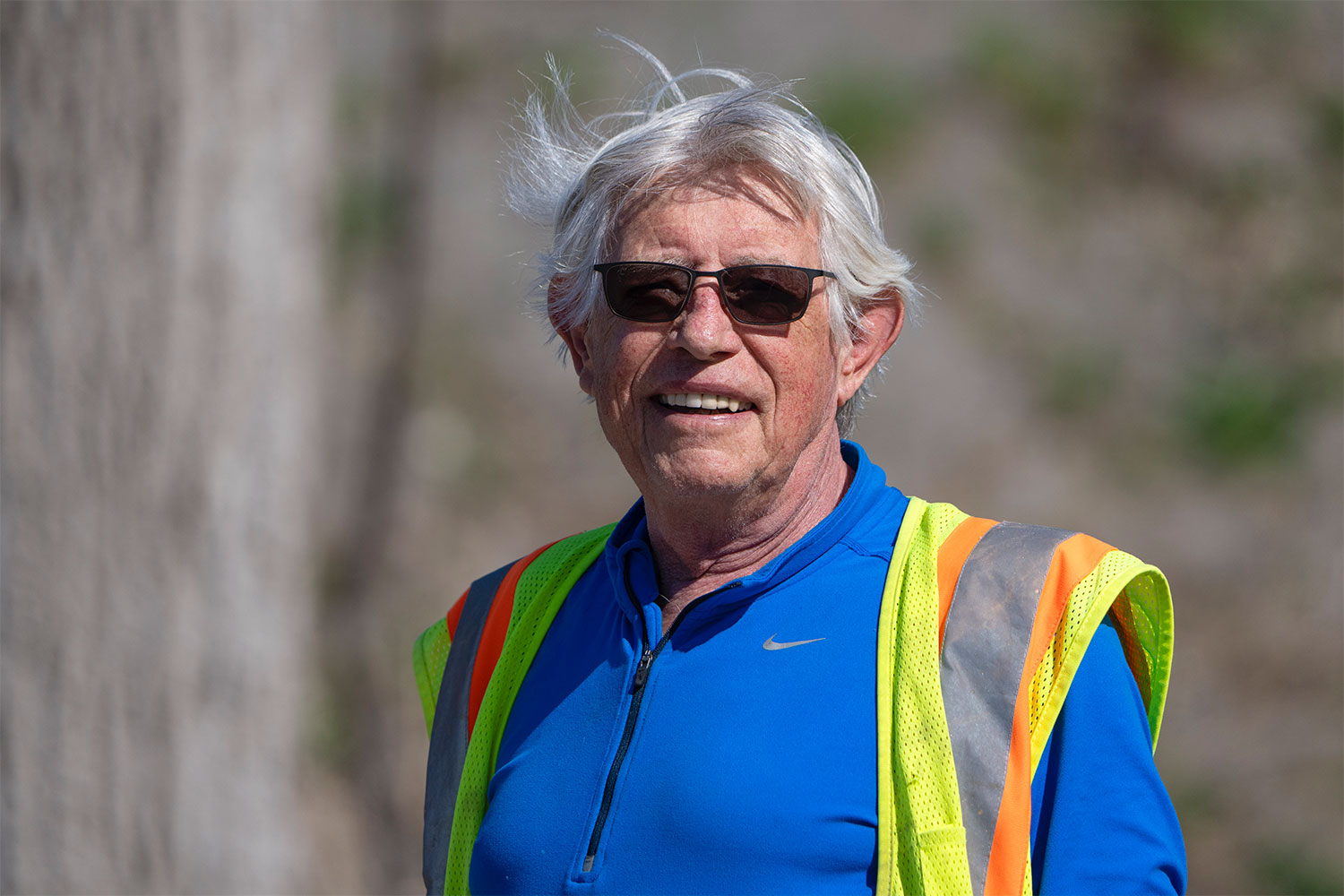
Milwaukee Record: Tell us about some of the initiatives the city is working on.
Dennis Fermenich: What Greenfield is currently doing are the projects you want to be working on as a forester. It goes farther than just planting trees. We’re trying to bring in things where if you’re going to sit and relax, you see birds. You see butterflies. You see the activity of nature in the city.
At Kulwicki Park we created a pollinator garden thanks to a pollinator protection committee we formed in 2019. At Edgewood School we’re working on a tree walk with signage on tree species and a QR code that will allow students to ask a forester a question, which makes the whole thing interactive. It’s awesome. We’ve planted milkweeds along Power Line Trail and want to expand that and make Pond View Park a destination for birders. There’s a children’s garden at the library. We’re formulating grants to get trees into low-income housing neighborhoods.
The mayor basically asked me and the city’s engineering project manager Renee Rollmann what it would take to become a Bird City, and that’s all we needed to hear. It opened up the door for us to do some of what I consider to be the most fun things to do in my career.

MR: How important is community involvement in these projects?
DF: For Bird City, Wild Birds Unlimited sponsors the yearly application, and they’ve been a great partner at Kulwicki Park. We started a pollinator committee and they stock and maintain the bird feeding station at the pollinator gardens. There’s benches and they were built by the Boy Scouts. On a citywide level, I’ve been writing grants ever since I started working here. We receive a lot of support from the DNR, Milwaukee Metropolitan Sewerage District, a couple of the groups involved with the Lake Michigan Watershed.
The community is everything and I do a lot of outreach. Once a month during the farmers’ market I have my forestry booth. People will bring me their questions and I can help them that way. The city let myself and our pollinator committee develop a Nature and Forestry Festival which will happen at Konkel Park on August 25 this year. Last year I had two big top tents. There’s friends groups, master gardeners, and lots of activities for the kids. There’s no selling anything at it. We give away stuff and make it very informational for the community.
MR: There seems to be a lot of work happening at Konkel Park.
DF: The project at Konkel Park is one of our biggest. Historically, the area used to be a wetland, but when they made Interstate-894 (in the mid-1900s) all of the soil was put into the wetland. The area became solid invasive buckthorn and box elders. It was just a bramble. Nobody could walk or do anything.
The city engineering department began work in 2022 to turn it back into a wetland, this time with boardwalks that people use to walk through everything. We got through the buckthorn and moved amazing amounts of soil. Last year we planted 880 seedling trees and 500 large trees. It’ll take seven or so years for everything to grow and turn it back into this amazing wetland that it once was, but it will be fantastic. We have a pond that has fish and it’s deep enough that fish should be able to survive throughout the winter. The wetland filters great. We’re sending less water at a time downstream and what we are sending is much cleaner, and that’s what a wetland is supposed to do. I hope I live long enough to see it mature because it’s been a career highlight project.
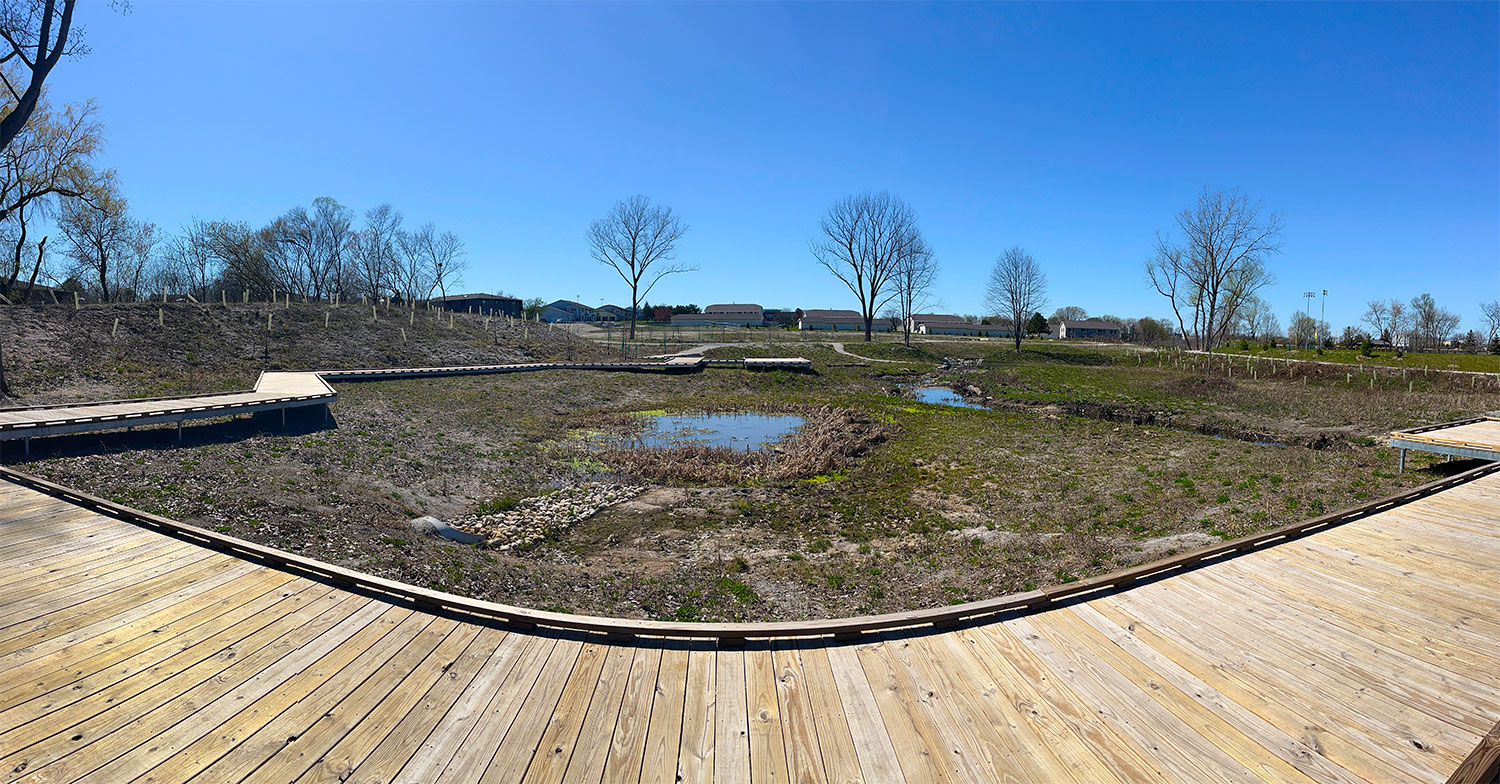
MR: How has the city shifted since the start of your tenure?
DF: I’ve been here 30 years. My job has changed significantly. When I got here, the real priority was just getting a tree in the ground along the city street. Before I came here, there was an article written in the journal, and they called Greenfield a concrete city because we had so few trees. So when I got here, with the help of the tree commission chairwoman, they hired me to be a part-time city forester. We went from hardly having any trees on the city street to 14,000 trees on public lands right now, so it’s been a busy 30 years.
Now, it has evolved. It’s gotten more and more of an awareness of the total environment instead of just trees. It’s not just about trees. If the trees don’t have pollinators, they don’t have the understory, and the flip side of that, if we don’t have trees and tree canopy, we’re not going to nurture the birds, bees, and butterflies. These current projects are looking at every opportunity to do that.
It’s just wonderful. I’m way past retirement age. I mean, way past, but why would I want to retire? As a lifelong arborist and environmentalist, I am doing some things that are really meaningful to me that make a difference. And I live in Greenfield. That’s as good as it gets, you know? Being able to make a difference in the place you live gives your life meaning. What more can you ask for?
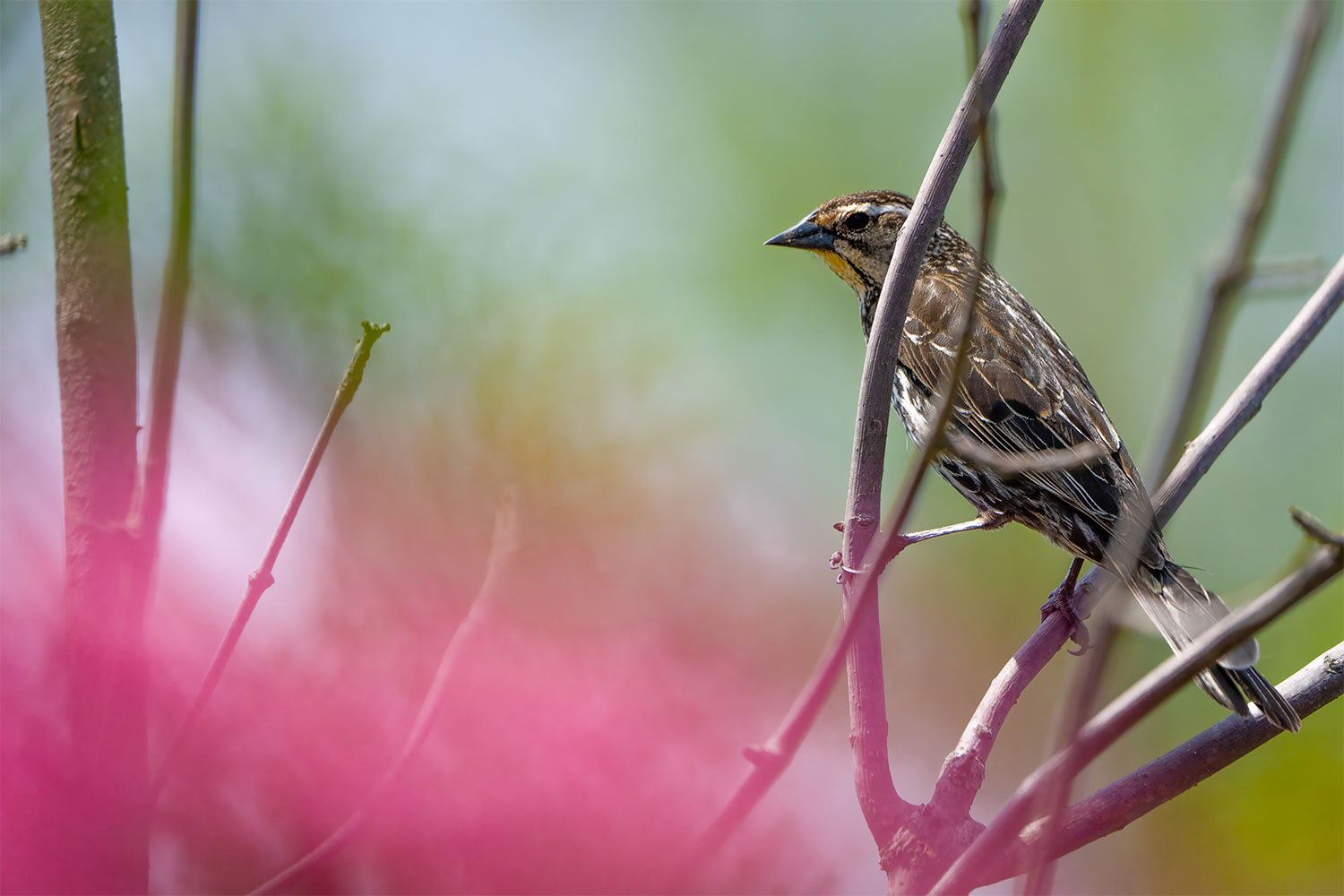
Female Red-winged Blackbird
Want more Milwaukee Record? Subscribe to our free weekly newsletter and/or support us on Patreon.
RELATED ARTICLES
• Bird City, Milwaukee County: Touring the parks of Glendale (and keeping cats indoors)
• Bird City, Milwaukee County: Exploring the Schlitz Audubon Nature Center in the Village of Bayside

